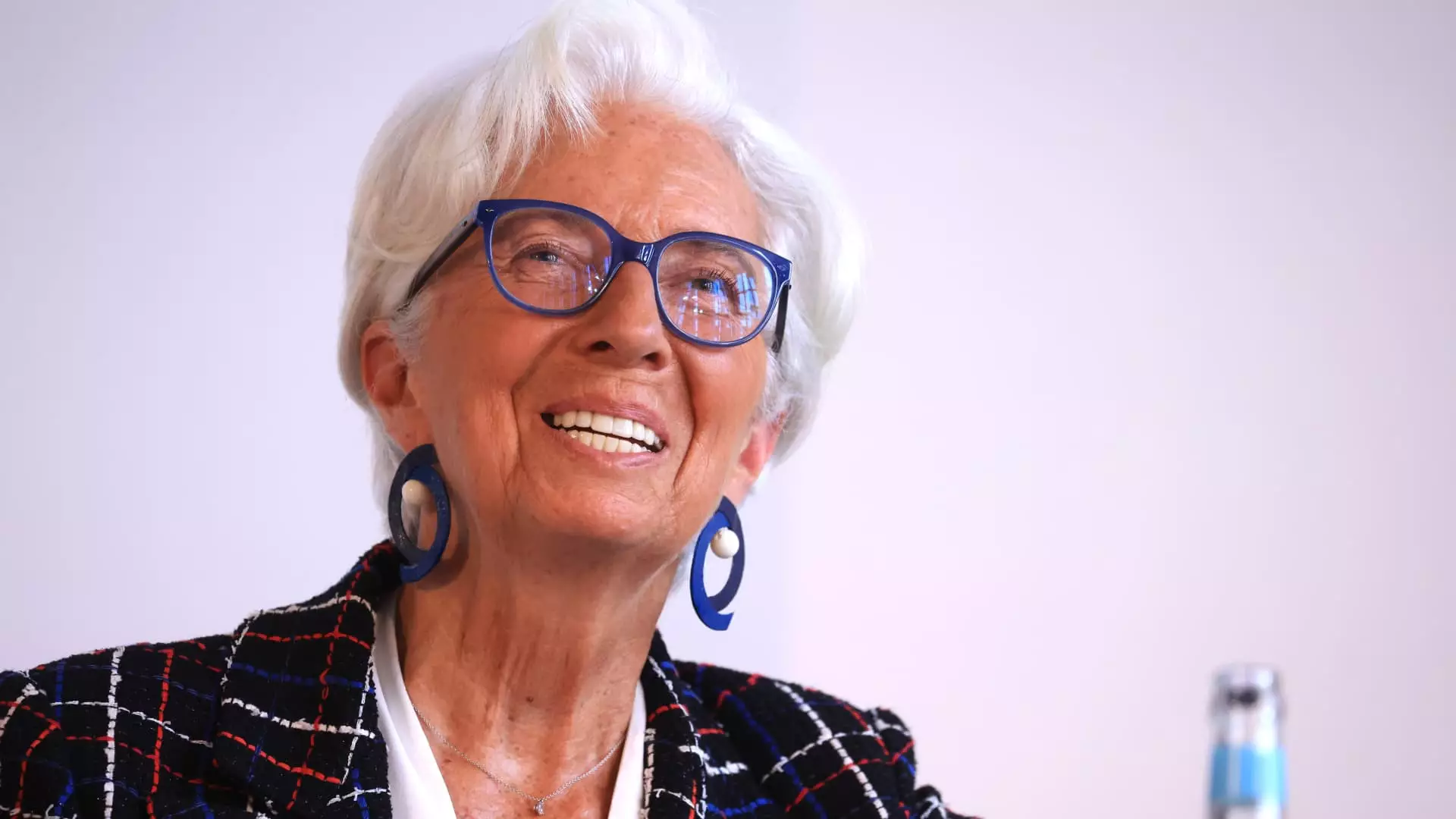The European Central Bank (ECB) has recently made headlines with its unexpected decision to reduce interest rates by 25 basis points, lowering the deposit facility rate to 2%. The intentions behind this maneuver deserve closer scrutiny. Amidst a backdrop of a strengthening euro and plummeting energy costs, the question arises: is this cut a sign of prudent economic management or a desperate grasp for stability? By examining the nuances of this decision, one can unveil a multitude of implications for the euro zone and its inhabitants.
In a climate where traders were nearly unanimous in expecting this quarter-point cut, the move was not entirely surprising. However, what lies beneath this decision is critical to understanding the current economic landscape. The ECB’s statement alluded to an updated assessment of inflation dynamics, which is an acknowledgment of the shifting winds of the eurozone economy. The fact that inflation dipped below the ECB’s target rate of 2% to a mere 1.9% indicates an environment where the traditional levers of monetary policy might not be as effective as they once were. The central bank’s expectation to average inflation at 2% by 2025—down from earlier estimates—paints a picture of cautious optimism amidst economic paralysis.
Market Reactions: A Mirror of Confidence or Indifference?
Post-announcement market responses showcased a hesitant optimism; the pan-European Stoxx 600 index saw a mild increase of approximately 0.3%. However, this perceived stability starkly contrasts with the underlying realities of the eurozone economy. While the euro appreciated by 0.2% against the dollar, it remains imperative to question what this says about market confidence in European economic recovery. Is it merely a short-term reaction to the cut, or does it reflect a broader expectation of sustained economic growth?
One cannot ignore the bigger picture of the ECB’s rate reduction occurring alongside lackluster economic indicators. The eurozone’s growth rate limped along at just 0.3% for the first quarter of 2025, with the ECB maintaining its stagnated forecast of a mere 0.9% growth for the year. The stark contrast between market responses and economic realities represents a chasm of concern for citizens and their financial futures. While the ECB may hope that lower rates will spur investment, the persistent uncertainty surrounding trade policies and geopolitical tensions paints a troubled picture for long-term growth prospects.
Geopolitical Tensions: Shaking the Foundation
Today’s eurozone also finds itself entangled in a web of geopolitical uncertainties that complicate the ECB’s efforts to stabilize the economy. Notably, U.S. President Donald Trump’s tariff policies remain a significant source of concern, with the possibility of tariffs on European industries like steel and auto manufacturing looming large. The impact of such duties could negate any benefits accrued from reduced interest rates, chaining the eurozone to the whims of international trade disputes and economic standoffs.
Interestingly, while the EU currently sits on the sidelines regarding retaliatory measures, the implications of these tariffs could attach themselves like a heavy weight to an already struggling economic ship. Heightened defense spending and infrastructural investments might provide a temporary buoyancy, but in a world where trade and investment rely heavily on international confidence, uncertainty can be crippling. The ECB’s decision may well reflect an understanding that economic aggression without stabilizing political lines might ultimately lead to further turmoil rather than economic resurgence.
A Path Forward? Principles of Progressive Economics
In the face of these challenges, it becomes evident that the ECB’s actions are more than a mere response to current conditions; they touch upon deeper economic principles that demand reconsideration. Center-wing liberalism encourages the conception of economics as a tool for societal benefit, rather than a mere vehicle for growth. It invites policymakers to pursue sustainable paths forward that account not only for numerical growth but also for the welfare of communities, distribution of wealth, and environmental sustainability.
Thus the ECB’s recent decision, while necessary in today’s context, must be accompanied by a rethink of what economic “success” entails. A focus on inclusive growth that prioritizes worker protections and equitable investment in community development could help to navigate these turbulent waters. In the end, the real challenge lies not just in the interest rates being set, but in realizing that broader economic stability relies on a society that thrives harmoniously, not merely survives amidst cuts and adjustments.

Leave a Reply